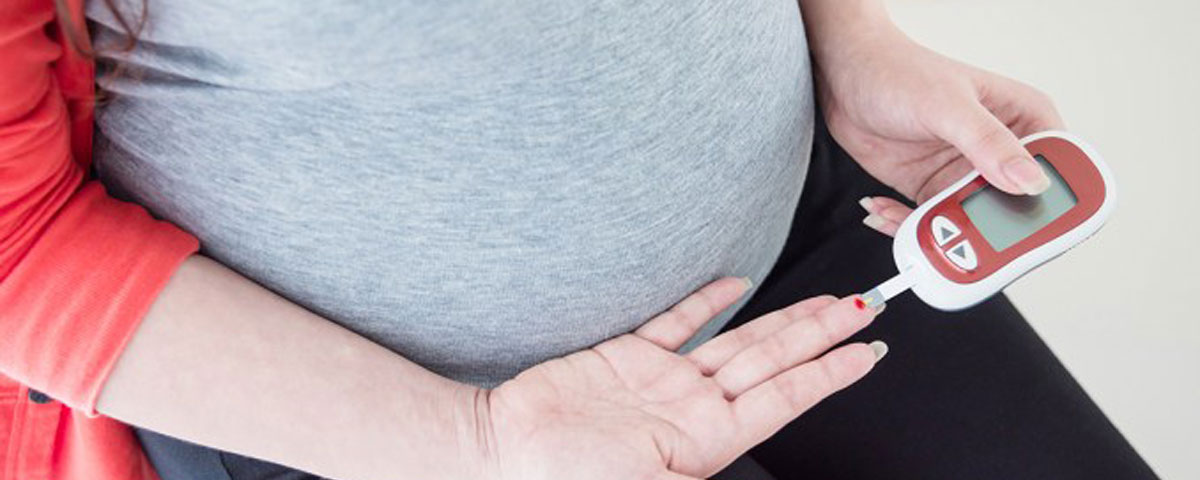GESTATIONAL DIABETES
Diabetes that appears during pregnancy may be pre-existing or may develop for the first time in pregnancy and can cause problems for both the mother and the foetus.
Gestational diabetes is the diabetes that is identified during pregnancy. During pregnancy, a series of endocrine changes take place, aimed at the survival and development of the fetus.
As the fetus is fully dependent on its mother for nutrients, the mother’s body prepares for this increased demand for nutrients through complex hormonal actions. The placenta plays a central role in this, secreting hormones that will lead to insulin resistance so that the mother’s glucose levels remain stable despite the increased consumption by the fetus.
As pregnancy progresses, fetal needs for nutrients increase, and so does insulin resistance. To maintain euglycaemia, the mother’s pancreas must secrete more insulin. If this does not happen, the mother will develop diabetes mellitus. And while a healthy mother can increase her insulin secretion to retain glucose levels within normal limits, a woman with risk factors for diabetes cannot. The most important risk factors are:
As insulin resistance peaks in the third trimester, screening for gestational diabetes takes place between 24-28 weeks of gestation.
Top
The most important direct risks to the foetus are macrosomia and stillbirth.
Additional direct risks to the new-born are
In the long term, however, the child faces increased risk both as an adult and as an adolescent to develop:
The key to reducing the risks of gestational diabetes is avoiding hyperglycaemia and maintaining normal sugars both during fasting and after meals.
In order to achieve this, the woman first of all should maintain a normal weight, enter pregnancy with a normal weight and make sure that the weight she gains during pregnancy does not exceed her target weight, which is determined by her endocrinologist and depends on her weight at the beginning of pregnancy.
Then, a diet is planned with a goal to maintain normal sugar levels and body weight during pregnancy, providing at the same the necessary nutrients for a normal fetal development, while avoiding ketosis. Exercise is also an important part of the treatment. Studies show that exercise that increases muscle mass helps sugar control and should be an integral part of treatment. Finally, women should take frequent sugar measurements both during fasting and after meals.
TopMost women with gestational diabetes have normal sugar levels after giving birth. However, they are at increased risk of developing gestational diabetes in subsequent pregnancies, pre-diabetes and diabetes in the following years, with this risk peaking in the first 5 years. In addition, women with gestational diabetes have an increased risk of cardiovascular disease. For this reason, they should undergo lifelong endocrine monitoring to prevent or identify these potential complications early.
TopThe risks to the foetus in a pregnancy with pre-existing diabetes depend directly on the mother’s blood sugar levels. Women with pre-existing diabetes and poor glycaemic control during the first weeks of pregnancy have double to quadruple the risk of congenital foetal anomalies and spontaneous abortions. Later in pregnancy, polyhydramnios is a common complication and can lead to premature delivery. In addition, 40%-60% of new-borns of mothers with pre-existing diabetes and poor glycaemic control are macrosomic increasing the risk of shoulder dystocia and severe injury to both the new-born and the mother. On the other hand, women with pre-existing diabetes (mainly type 1) and microvascular complications or hypertension have a 6-10 times greater risk of intrauterine growth retardation of the fetus. The new-born of a mother with pre-existing diabetes has an increased risk of developing hypoglycaemia and other biochemical abnormalities, while the risk of intrauterine death is increased. Finally, pregnant women with pre-existing diabetes have an increased risk of cardiovascular disease, while women with type 1 diabetes are at greater risk of diabetic ketoacidosis.
Top
Treatment of pre-existing diabetes in pregnancy begins long before conception. Ideally, women with pre-existing diabetes should plan their pregnancy with the aim of a safer outcome for both themselves and the foetus they are carrying. Prior to any planned pregnancy, extensive biochemical testing should be done, embryotoxic medications should be discontinued, folic acid should be added, co-morbidities should be addressed, and an extensive discussion of risks, potential complications and targets should take place.
TopIn our clinic, having gained valuable experience in one of the world’s largest pregnancy centres, we provide an intensive treatment and support program for the pregnant woman, which is individualized each time to the needs and peculiarities of the mother and the fetus.